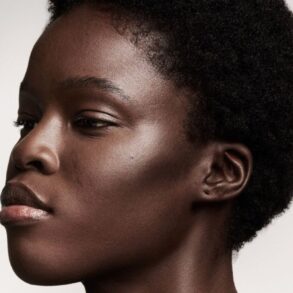
Most Sundays, Mary Estrada, 57, wakes up at 3 a.m. and starts a ritual she’s kept for some 40 years. She puts on her makeup, blow dries her hair, and takes her white poodle Koko for a walk around her neighborhood in Pomona, California. Then, around 6:30 a.m. she drives 135 miles to San Diego and back to visit her husband Robert, who has been in and out of prison throughout his adult life.
One in four women in the United States have a family member in prison—and those carrying the resulting financial and emotional weight are disproportionately women of color. While over 90 percent of the incarcerated population are men, it’s women who end up spending billions of dollars every year on phone calls, prison store accounts, and in-person visits.
In this episode of Latino USA, we spend a Sunday with Mary and learn about the real costs of supporting a loved one in prison for thousands of women in the U.S.
Mary was born in the Philippines, but she grew up in Los Angeles. She went to high school with Robert’s sister, and that’s how she met him. Robert grew up in the San Fernando Valley, a majority Latino area. His mother is Mexican. Both Mary and Robert had difficult childhoods. She started drinking and using drugs when she was 12 years old. Robert’s father, an Italian-Mexican, introduced Robert to drugs when he was 10. “We balanced each other out,” Mary says of Robert.
Mary and Robert started dating when they were teenagers. They’d break up and get back together often. Robert joined a gang. He started selling drugs, doing carjackings, robberies. When he was 18, he went to prison for the first time as an adult. Mary couldn’t talk to him for about a week because he was held in solitary confinement. She missed him, cried for him. That’s the moment she knew she was in love with Robert.
“I’ve never not had a boyfriend. And with him it was just so different,” Mary said to Latino USA. “There was a connection that I can’t even explain. It’s like this guy took my heart. I knew that I was gonna be with him for the rest of my life, whether he was out here or in there.”
Mary has been supporting Robert financially and emotionally for some 40 years now: “I tell everybody, this journey’s not easy. Evaluate or reevaluate your lives before you do this journey, because there’s no going back. It’s time consuming. It’s expensive.”
Mary says she spends about $1,500 a month on Robert. That includes adding $240 a month to his in-prison account so that he can buy food and other essentials, paying for quarterly care packages, buying gas to drive to San Diego and back, as well as paying his restitution—the money the judge ordered Robert to pay back after he was sentenced, which amounted to $10,000. Mary says she was in debt for years to support Robert.
“With all the money that I put into my husband from the age of 18 till now, I’d be a multi-millionaire,” Mary said.
The Prison Policy Initiative, a non-profit research group based in Massachusetts, estimated that families across the U.S. spend nearly 3 billion dollars —yes, with a B— every year in commissary fees and phone calls.
Despite all the costs, Mary continues to take care of Robert, and most Sundays she drives down to San Diego to spend a few hours with him.
“People shouldn’t be so cruel. They need to stop labeling others. Because we’re with men incarcerated, that doesn’t make us a loser. We have careers, we have a life out here,” Mary said. “And the correctional officers, they look at us, like, if we’re scum, like we don’t know any better, like we’re not educated. And it’s just no, you guys are wrong. We are educated. I’m happy with what I have. I may not make a lot of money, but I’ve accomplished a lot.
Photo courtesy of Mary Estrada
This post was originally published on this site be sure to check out more of their content.









